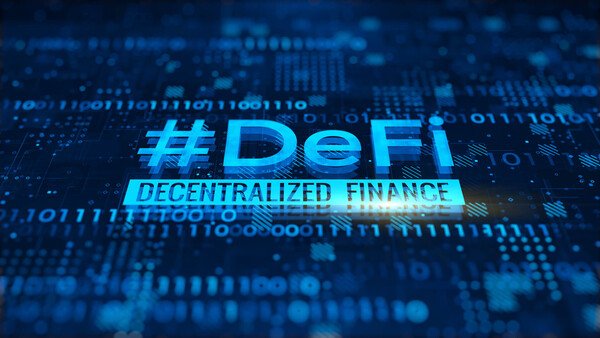Moving beyond the passive “HODLing” strategy in crypto investing opens up a dynamic world of active approaches. This detailed exploration delves into various strategies, from earning passive income through staking and yield farming to actively participating in the market via day trading, swing trading, and arbitrage. 1 It also examines investing in emerging trends like DeFi, NFTs, and the metaverse, as well as participating in initial coin offerings. Crucially, it highlights the key considerations for each strategy, emphasizing risk management, due diligence, continuous learning, and the importance of aligning investment choices with individual risk tolerance. Mastering these advanced techniques can potentially yield greater returns but demands a deeper understanding of the crypto landscape and a more hands-on approach than simply holding assets long-term.
Unlock Crypto Potential: Strategies Beyond HODLing

1. Staking and Yield Farming: Earning Passive Income
- Staking: This involves locking up your crypto assets in a proof-of-stake (PoS) blockchain network to support its operations. In return for contributing to the network’s security and validation, you earn rewards, similar to earning interest in a traditional savings account. The percentage yield (APY – Annual Percentage Yield) can vary significantly depending on the cryptocurrency and the staking platform. Think of it as earning a dividend on your crypto holdings.
- Yield Farming: This is a more complex strategy that involves lending or staking your crypto assets on decentralized finance (DeFi) platforms to earn yield. You might provide liquidity to decentralized exchanges (DEXs) by depositing pairs of tokens into liquidity pools. In return, you receive a share of the trading fees and often additional governance tokens as rewards. Yield farming can offer higher APYs than staking but comes with increased risks, including smart contract vulnerabilities, impermanent loss (where the value of your deposited assets changes relative to each other), and the volatility of the underlying assets.
Key Considerations for Staking and Yield Farming
- Lock-up Periods: Some staking and farming opportunities require you to lock up your assets for a specific period, limiting your ability to access them quickly.
- Platform Risk: The security and reliability of the staking or yield farming platform are crucial. Choose reputable and audited platforms.
- Gas Fees: Especially on blockchains like Ethereum, transaction fees (gas fees) for interacting with DeFi protocols can significantly impact your profitability, especially for smaller amounts.
- Impermanent Loss: This is a unique risk in liquidity pools where the price divergence between the paired assets can lead to a decrease in the dollar value of your deposited assets compared to simply holding them.
2. Trading Strategies: Active Participation in the Market
- Day Trading: This involves buying and selling cryptocurrencies within the same day, aiming to profit from small price fluctuations. It requires significant time commitment, technical analysis skills, and a high tolerance for risk.
- Swing Trading: This strategy aims to profit from price swings over a period of days or weeks. Swing traders analyze price charts and indicators to identify potential entry and exit points. It requires less constant attention than day trading but still demands technical analysis skills.
- Scalping: This is an extremely short-term trading strategy that focuses on making numerous small profits from tiny price changes throughout the day. It requires very fast execution and a deep understanding of market microstructures.
- Arbitrage: This involves exploiting price differences of the same cryptocurrency across different exchanges. For example, if Bitcoin is trading at $60,000 on one exchange and $60,100 on another, an arbitrageur can buy on the lower-priced exchange and immediately sell on the higher-priced one for a small profit. This strategy often requires sophisticated tools and fast execution.
- Dollar-Cost Averaging (DCA): While often considered a passive approach, DCA can be a more active decision than simply holding. It involves investing a fixed amount of money at regular intervals (e.g., weekly, monthly) regardless of the asset’s price. This helps to mitigate the risk of buying a large amount at a market peak and can lead to a better average entry price over time.
Key Considerations for Trading Strategies
- Technical Analysis: Understanding chart patterns, indicators (like moving averages, RSI, MACD), and volume analysis is often crucial for identifying trading opportunities.
- Fundamental Analysis: Evaluating the underlying technology, adoption, team, and use cases of a cryptocurrency can help in making informed trading decisions, especially for longer-term swing trades.
- Risk Management: Implementing stop-loss orders and managing your position sizes are essential to protect your capital. Never invest more than you can afford to lose.
- Time Commitment: Active trading strategies require significant time and attention to monitor the market and execute trades.
- Transaction Fees: Frequent trading can incur substantial transaction fees, impacting your profitability.
3. Investing in Emerging Trends
- DeFi (Decentralized Finance): Actively researching and investing in promising DeFi projects, protocols, and governance tokens can be a strategy. However, this space is rapidly evolving and carries significant risks.
- NFTs (Non-Fungible Tokens): Beyond just collecting digital art, exploring use cases of NFTs in areas like gaming, metaverse, and ticketing can present investment opportunities. This market is highly speculative and volatile.
- Metaverse: Investing in cryptocurrencies and projects building the infrastructure and applications for virtual worlds is another emerging trend.
- Layer-2 Scaling Solutions: These solutions aim to improve the scalability and reduce transaction fees of layer-1 blockchains like Ethereum. Investing in the tokens of promising layer-2 projects could be a strategy.
Key Considerations for Investing in Emerging Trends
- High Risk and Volatility: These areas are often in their early stages and can experience extreme price swings.
- Thorough Research: Deeply understanding the technology, team, and potential of these projects is crucial.
- Long-Term Perspective: Investments in emerging trends often require a longer time horizon to realize their potential.
4. Participating in Initial Coin Offerings (ICOs), Initial DEX Offerings (IDOs), and Initial Exchange Offerings (IEOs)
These are methods for new crypto projects to raise capital by selling tokens to the public. While they can offer the potential for high returns if the project is successful, they also come with significant risks, including scams and project failure. Thorough due diligence is paramount.
Important Considerations for All Strategies Beyond HODLing:
- Risk Tolerance: Understand your own risk appetite and choose strategies that align with it. Higher potential returns often come with higher risks.
- Education: Continuously learn about the crypto market, different strategies, and the technologies involved.
- Due Diligence: Thoroughly research any project or platform before investing your money.
- Security: Implement strong security measures to protect your crypto assets, such as using strong passwords, enabling two-factor authentication, and using secure wallets.
- Diversification: Don’t put all your eggs in one basket. Diversify your investments across different cryptocurrencies and strategies.
- Emotional Control: Avoid making impulsive decisions based on fear or greed. Stick to your investment plan.
Mastering the art of crypto investing beyond HODLing involves a combination of knowledge, skill, discipline, and a clear understanding of the risks involved. It’s an ongoing learning process, and staying informed about market developments is crucial for success.
In conclusion, while simply “HODLing” can be a foundational strategy in cryptocurrency investing, truly mastering the art involves venturing beyond this passive approach. Exploring strategies like staking, yield farming, active trading, and investing in emerging trends offers the potential for enhanced returns and deeper engagement with the crypto ecosystem. However, this journey demands a commitment to continuous learning, rigorous due diligence, and a clear understanding of the inherent risks associated with each strategy. Ultimately, successful crypto investing beyond HODLing hinges on aligning chosen techniques with individual risk tolerance, implementing robust risk management practices, and staying informed in this rapidly evolving landscape. It’s about moving from passive accumulation to active participation, transforming your approach from a simple hold to a nuanced and strategic engagement with the world of digital assets.
Ready to start your cryptocurrency journey?
If you’re interested in exploring the world of crypto trading, here are some trusted platforms where you can create an account:
🔹 Binance – A global leader in cryptocurrency trading.
🔹 Bybit – A user-friendly platform for both beginners and advanced traders.
These platforms offer innovative features and a secure environment for trading and learning about cryptocurrencies. Join today and start exploring the opportunities in this exciting space!
🚀 Want to stay updated with the latest insights and discussions on cryptocurrency?
Join our crypto community for news, discussions, and market updates: OCBCryptoHub on Telegram.
📩 For collaborations and inquiries: datnk710@gmail.com
Disclaimer: Always do your own research (DYOR) and ensure you understand the risks before making any financial decisions.






2 thoughts on “Mastering the Art of Crypto Investing: Strategies Beyond HODLing”